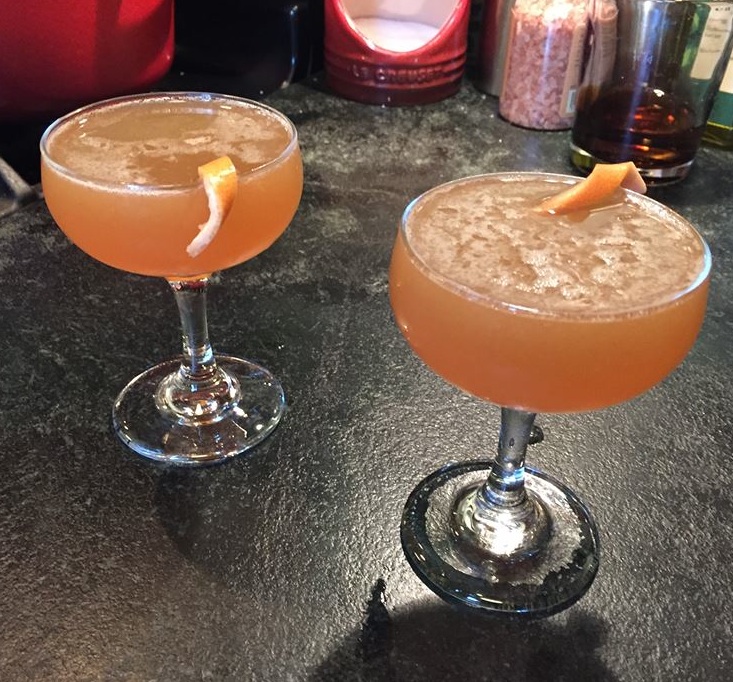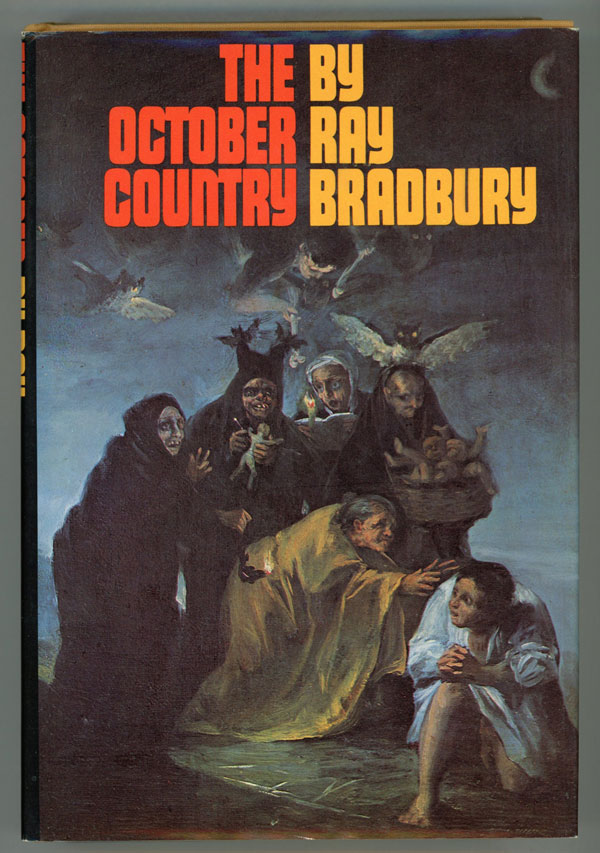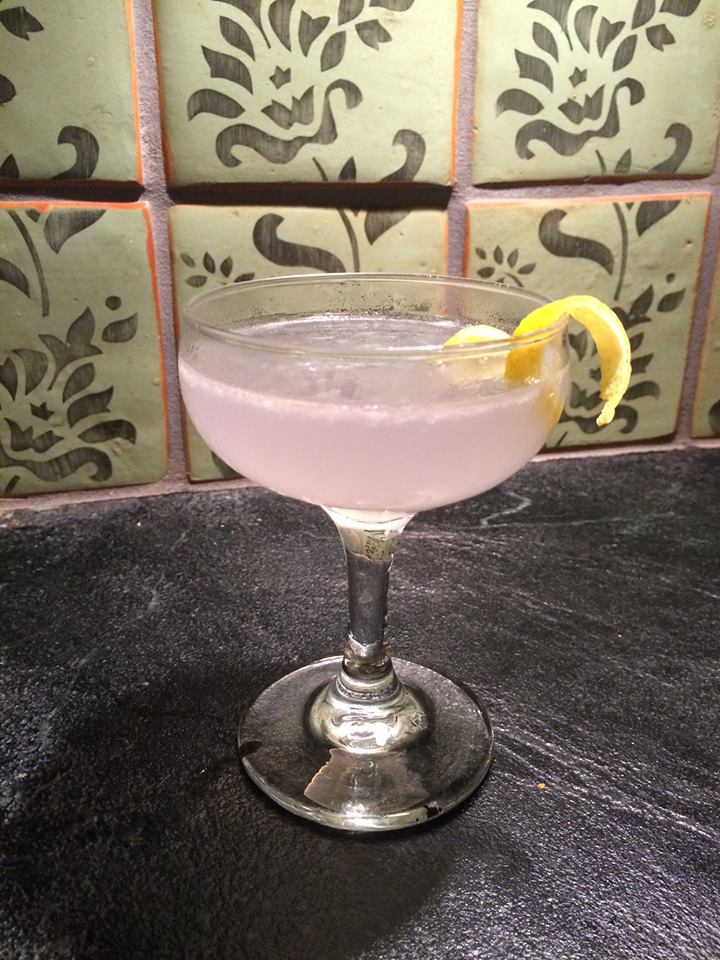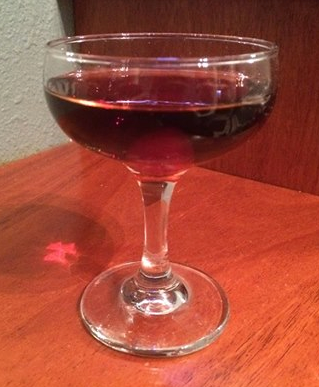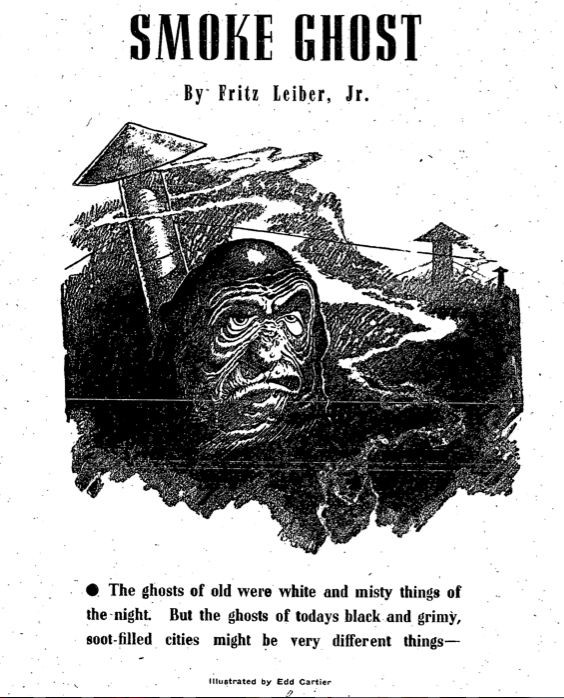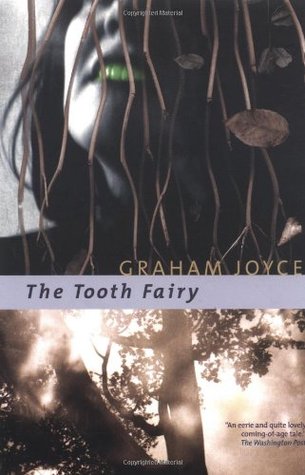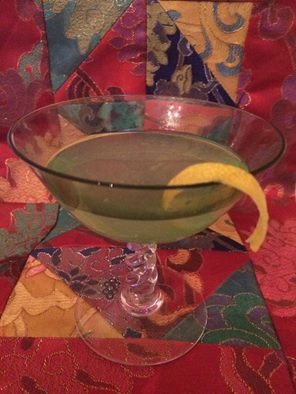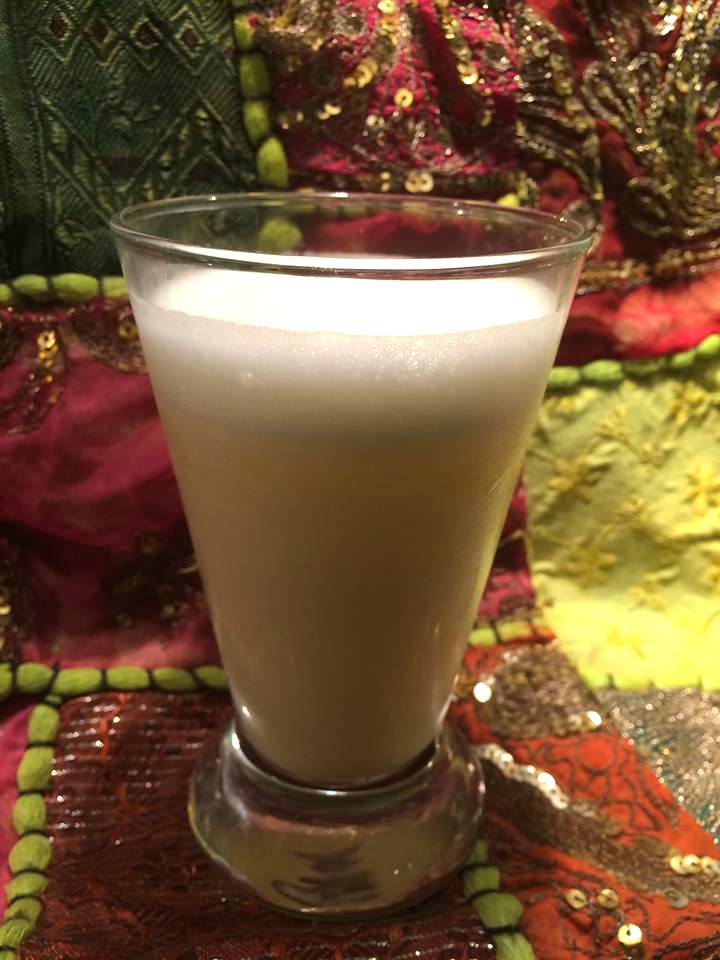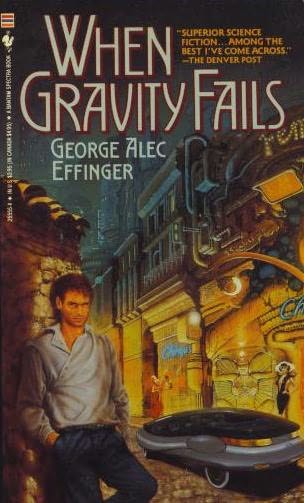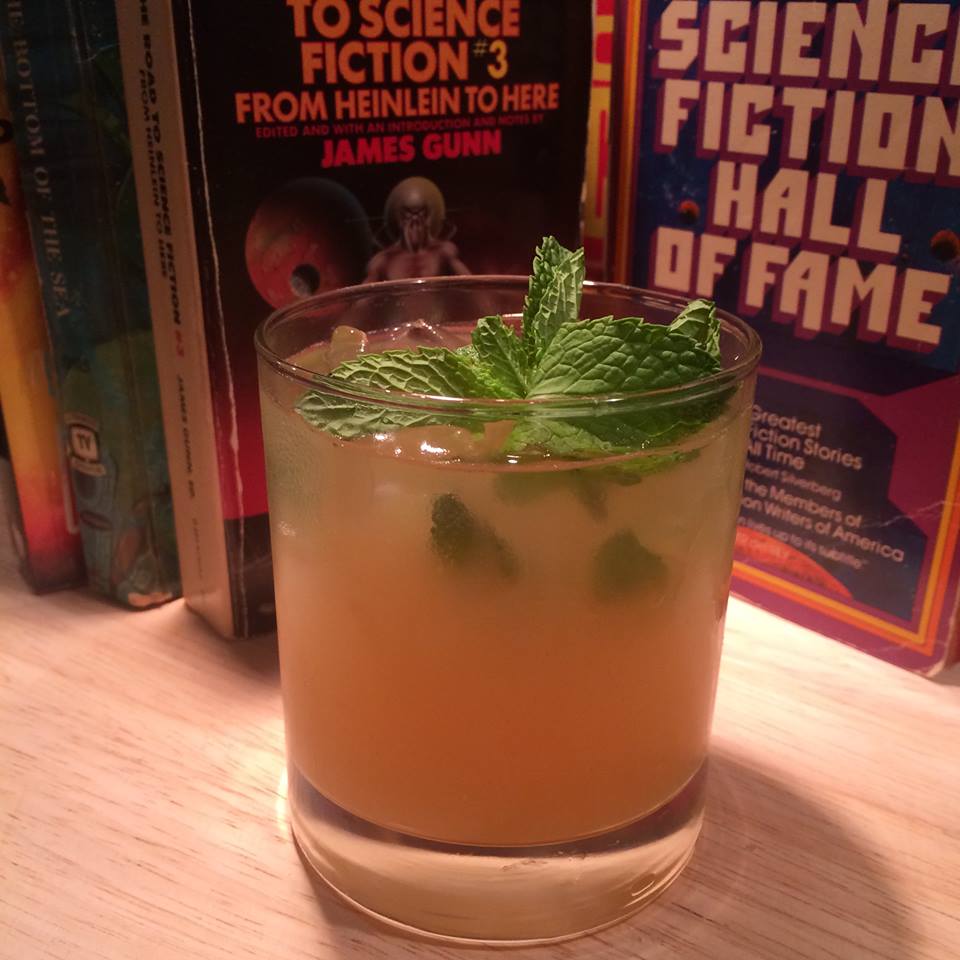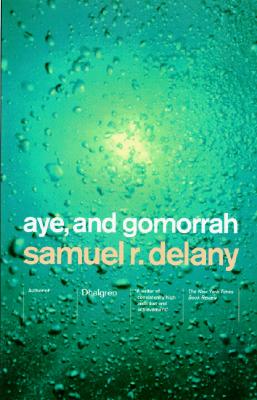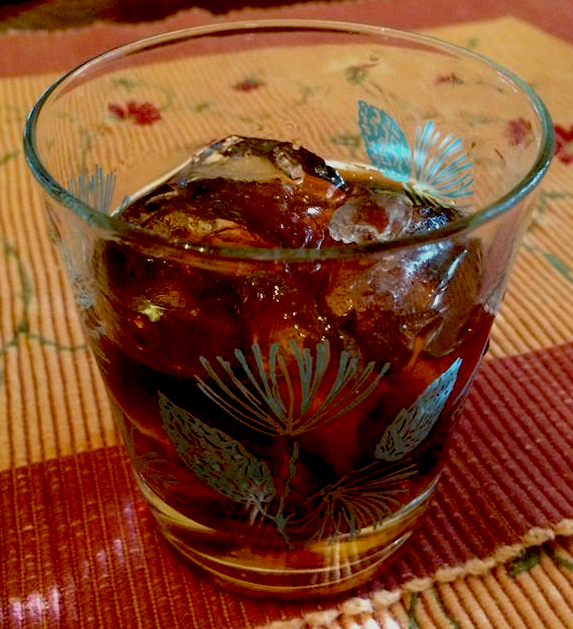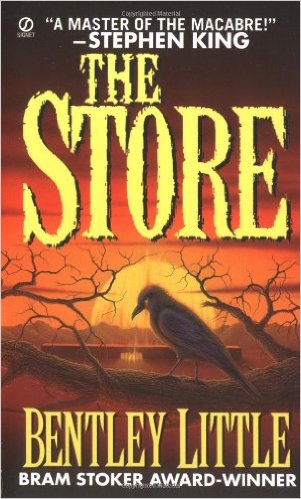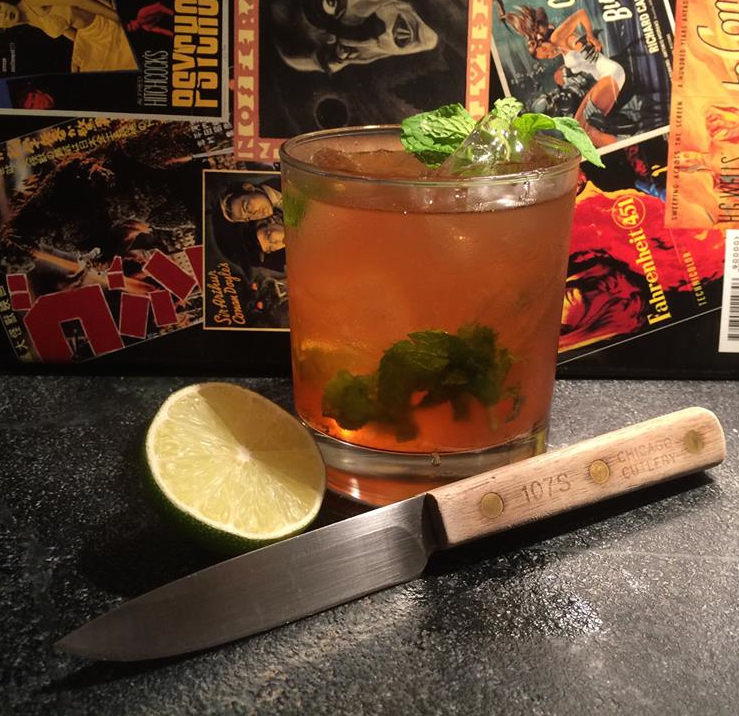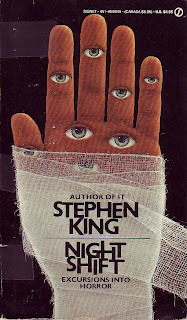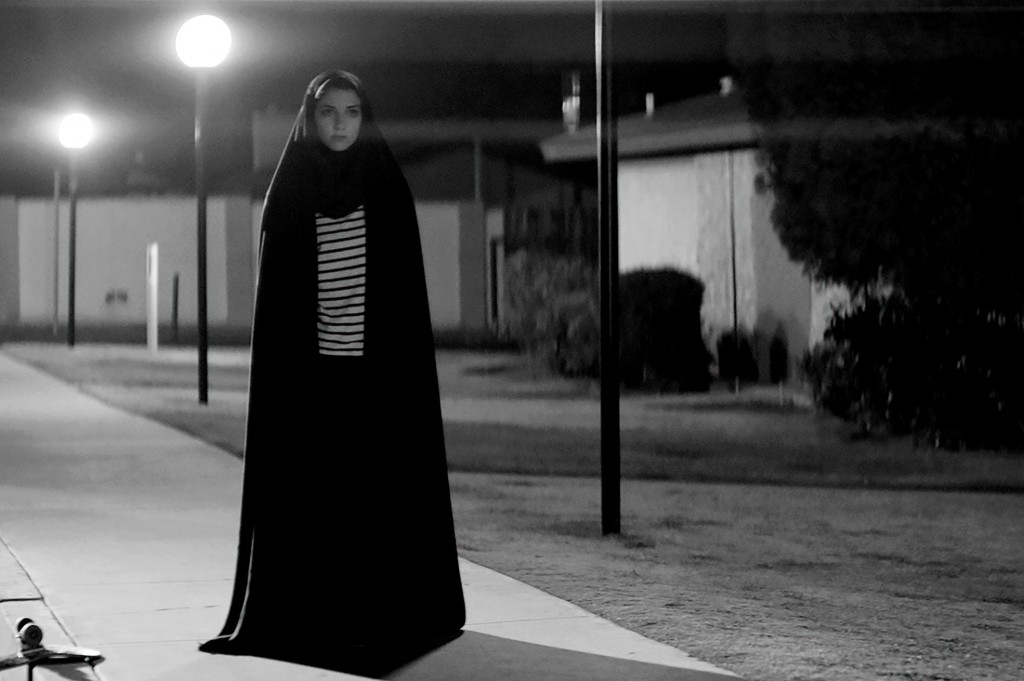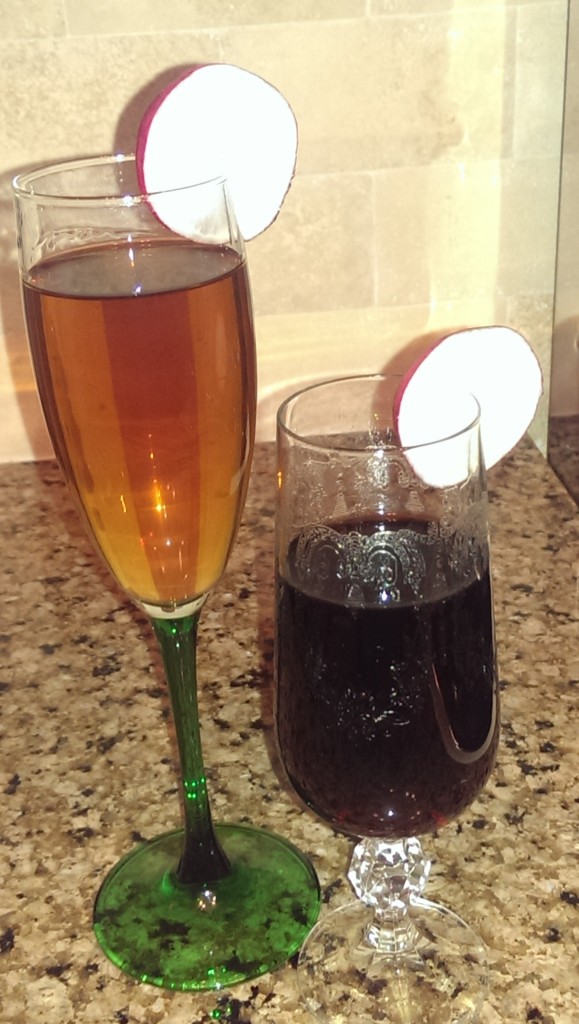
Two versions of the Ginger Scald featured in Scott Lynch's "The Lies of Locke Lamora." The one on the left is made with sherry, the one on the right with Marsala.
Guest bartender Travis E. Poling drinks beer and reads books, and every now and then he writes books about beer. The latest is San Antonio Beer: Alamo City History by the Pint with co-author Jeremy Banas. Poling has been a journalist in the San Antonio area for nearly 30 years and is at work on his third book on beer, researching a historical novel and serving as guest curator for an upcoming museum exhibit on brewing in Texas.
It wasn’t until reading about the upcoming fourth novel in the Gentlemen Bastards cannon that Scott Lynch came to my attention. The premise from this Wisconsin fantasy writer was intriguing, so I shopped my own home library and to great delight found Lynch’s debut novel The Lies of Locke Lamora.
The setting for this 2006 debut fantasy is the city of Camorra, reminiscent of an Italian city-state with the canals of Venice, a ruling Duke and a peerage protected by the Secret Peace from a hierarchal thieving class ruled by the ruthless Capa Barsavi.
We meet Locke Lamora as a newly orphaned thief in training and follow him through his unconventional upbringing in revealing flashbacks in between the ambitious con action of the Gentlemen Bastards gang led by the adult Lamora.
This is a caper tale, with deceptions on multiple levels, and a story of revenge served both with calculating cold and hot abandon. The character of Locke is as likable as he is cunning, making him at ease posing as a brandy merchant from far lands in a long con of the Don Lorenzo and Doña Sofia. His team, through multiple talents and disguises, brings the falsehood to life.
Beginning, middle and end are all satisfying with numerous twists including a threat to the Camorri underworld by the mysterious Grey King, who is picking off the underbosses. And while this novel wraps nicely, there are enough hints throughout to tease future plot lines. There are mentions of an absent female member of the team, who may have been a love interest of Lamora, lands across the sea from Camorra, and the mysteries of the long-gone alien race that built the mostly indestructible bones of the city on which Camorra was built.
It isn’t often that a fantasy novel includes instructions for a cocktail, but since Lynch provided instructions on a Camorri drink sipped while wealthy spectators watched nasty sea beasties tear prisoners apart as punishment and amusement, I thought I’d give this monster a go (with some substitutions, of course. Here is the description in the book:
“Cont? moved adroitly to fill [the Don’s request for a Ginger Scald], selecting a tall crystal wine flute, into which he poured two fingers of purest Camorri ginger oil, the color of scorched cinnamon. To this he added a sizable splash of milky pear brandy, followed by a transparent heavy liquor called ajento, actually a cooking wine flavored with radishes. When this cocktail was mixed, Cont? wrapped a wet towel around the fingers of his left hand and reached for a covered brazier smoldering to the side of the liquor cabinet. He withdrew a slender metal rod, orange-red at the tip, and plunged it into the cocktail; there was an audible hiss and a small puff of spicy steam. Once the rod was stanched, Cont? stirred the drink briskly and precisely three times, then presented it to Locke on a thin, silver plate.”
Here’s my variation on the drink using a French ginger liqueur as the spicy base. To recreate the fictional ajento I tried infusing the wine with radish, but the concoction became a bit sulfurous after a few hours. The muddling imparted a cleaner flavor.
GINGER SCALD
1.5 ounces Domaine de Canton ginger liqueur
1 ounce Laird’s Straight Apple Brandy
0.5 ounces Poire (pear liqueur)
1.5 ounces Sweet Marsala wine
3 dashes Angostura aromatic bitters
1 radish
Pour first three ingredients in a fluted glass. Remove a 1/8-inch slice from the center of the radish and set aside. Chop the rest of the radish and muddle it with the wine (for a different take, use sherry instead of Marsala). Add the bitters to the wine, strain and top off the drink. Stir three times with a heated rod (I used a metal kabob skewer heated on a gas burner). Garnish with the slice of radish on the rim.

